Lancaster residence image gallery
How we’re harvesting, cycling, and playing with multiple, free, on-site waters and what they grow…
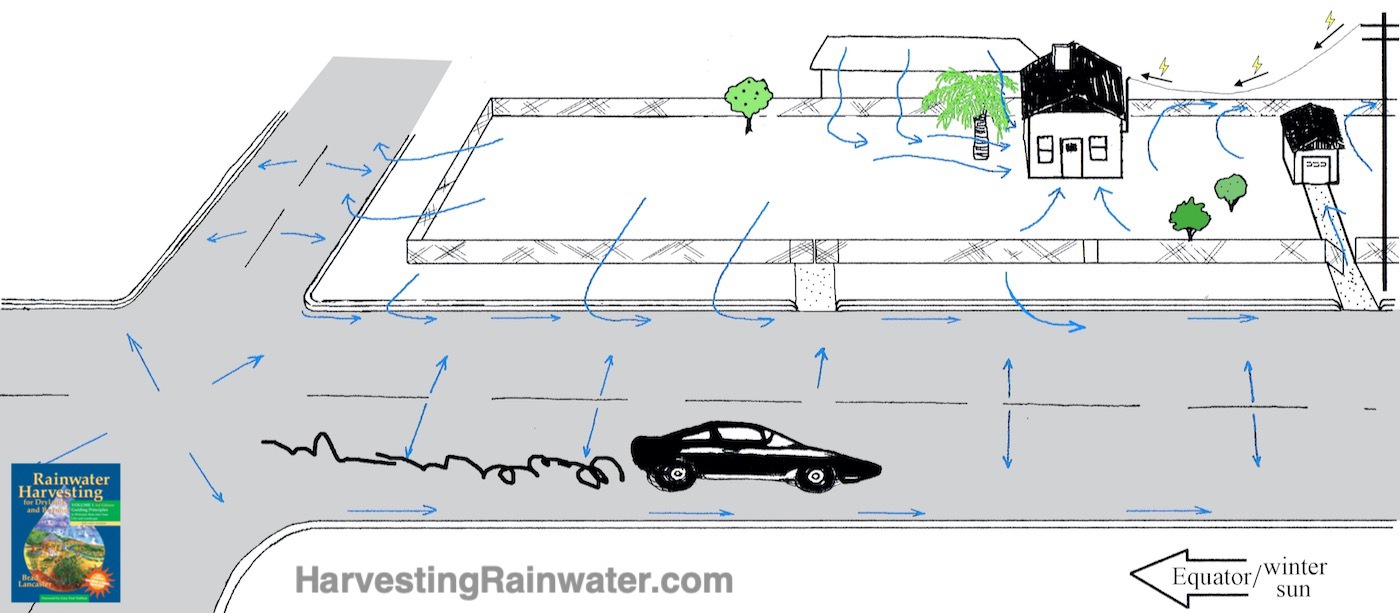
Our site at time of purchase in 1994.
Most runoff drains off site, up against home, or through the garage. All greywater goes down the sewer.
Palm tree blocks winter solar access.
Exposed and unwelcoming street and walkway heat up like a solar oven most of the year.
Illustration: Ann Audrey
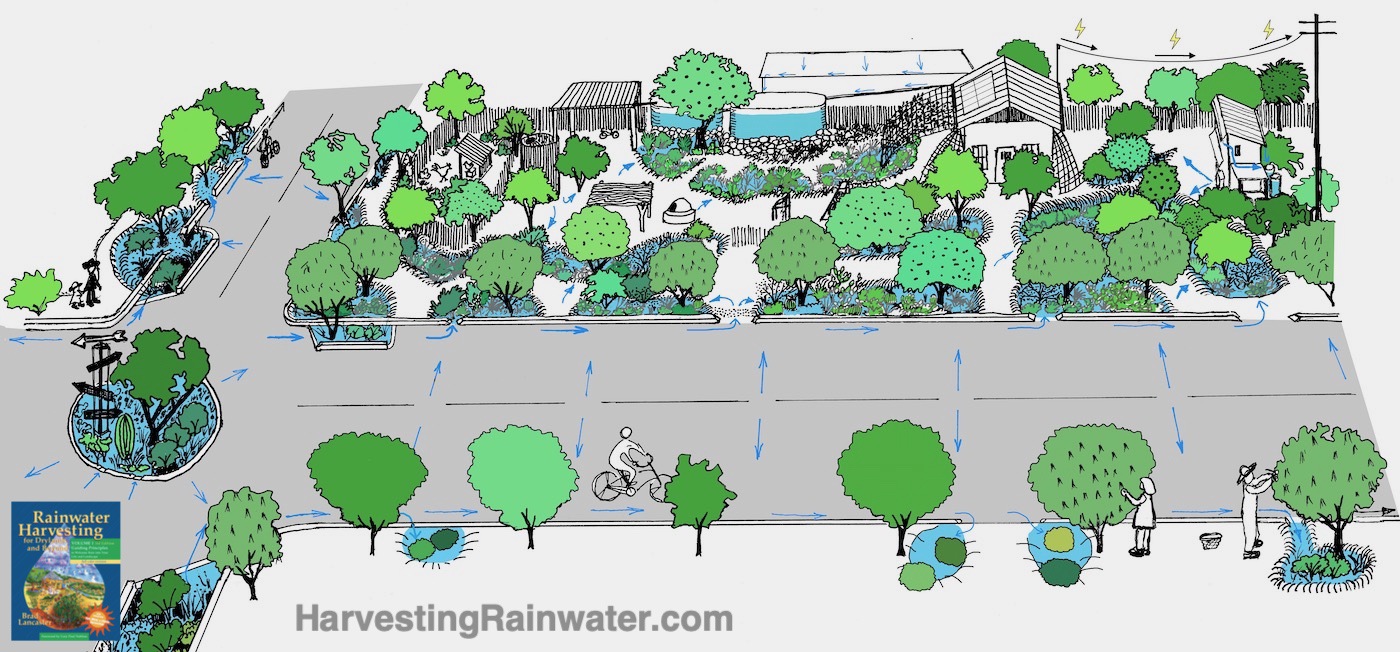
Our site in 2021.
No runoff leaves site. On-site runoff is infiltrated before it gets to house or garage, and we have positive drainage away from buildings. Street runoff is directed to basins and trees along the curb. All greywater is directed to—and recycled within—the landscape.
Winter solar access regained after removing palm tree. Solar panels installed on roof, solar clothes dryer (clothes line) installed along fence, and solar oven and solar hot water heater installed on ground because old roof could not bear the water heater’s weight.)
Along with our neighbors we took to the streets. More native food-bearing trees were planted in the public right-of-way. Street curbs were cut to direct street runoff to tree basins. Traffic circles and chicanes or pullouts were installed to calm traffic, harvest water, and grow food-bearing shade. All strategies build community as we enhance and enjoy our community together.
Illustration: Ann Audrey
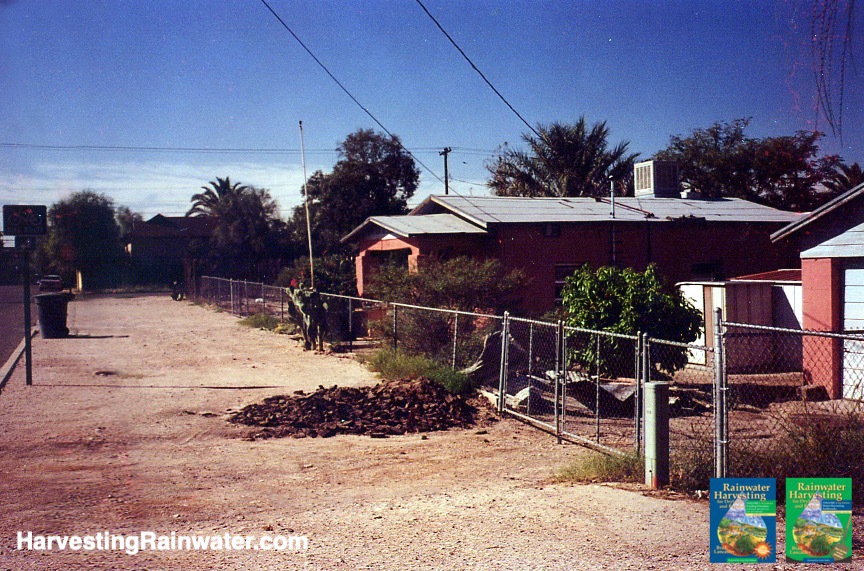
Public right-of-way adjoining property, with asphalt driveway freshly removed. 1994.
Photo: Brad Lancaster
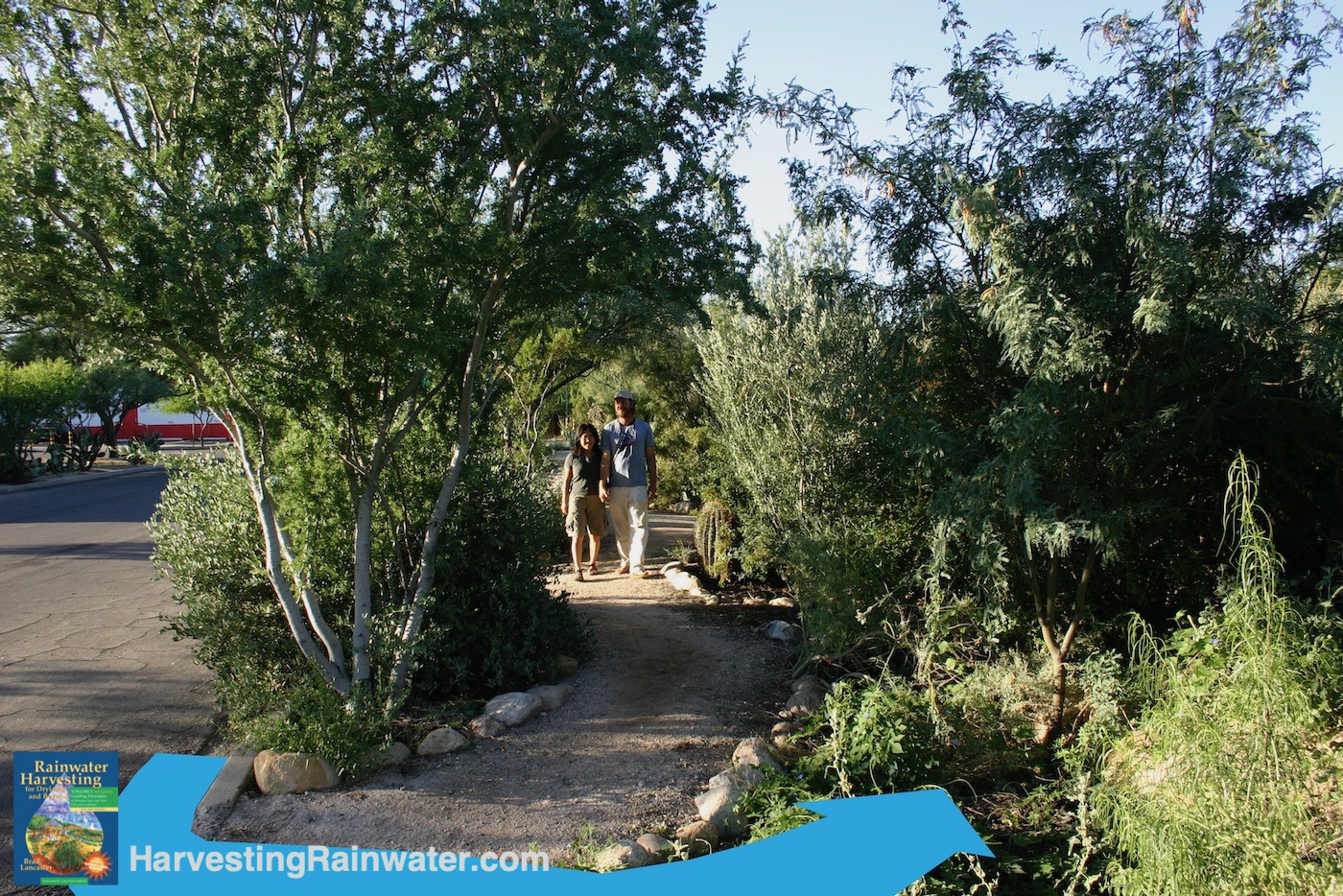
Tree-lined footpath reviving the once sterile right-of-way. 2006. Blue arrow denotes water flow.
Photo: Brad Lancaster
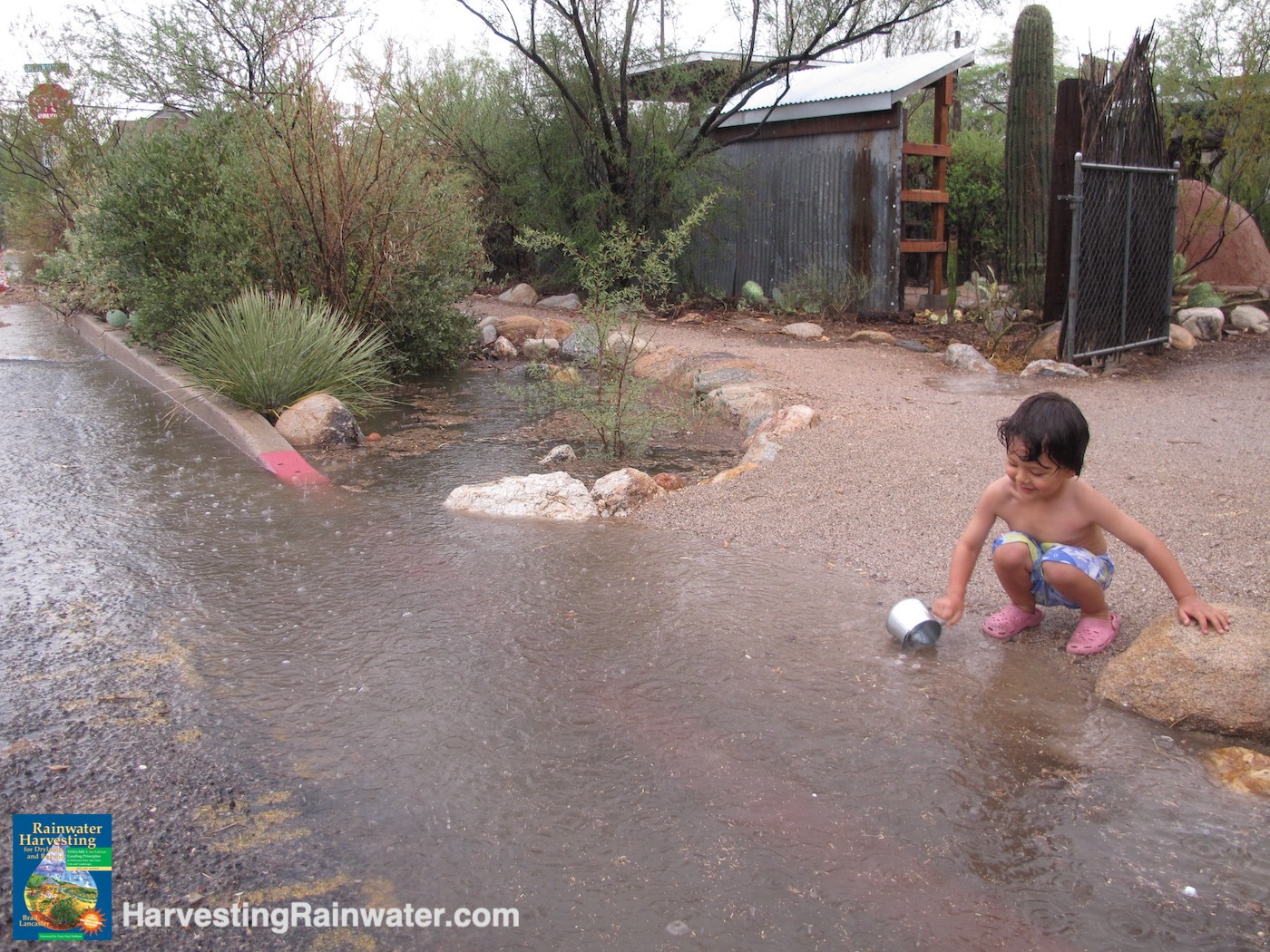
Photo: Brad Lancaster, 2011
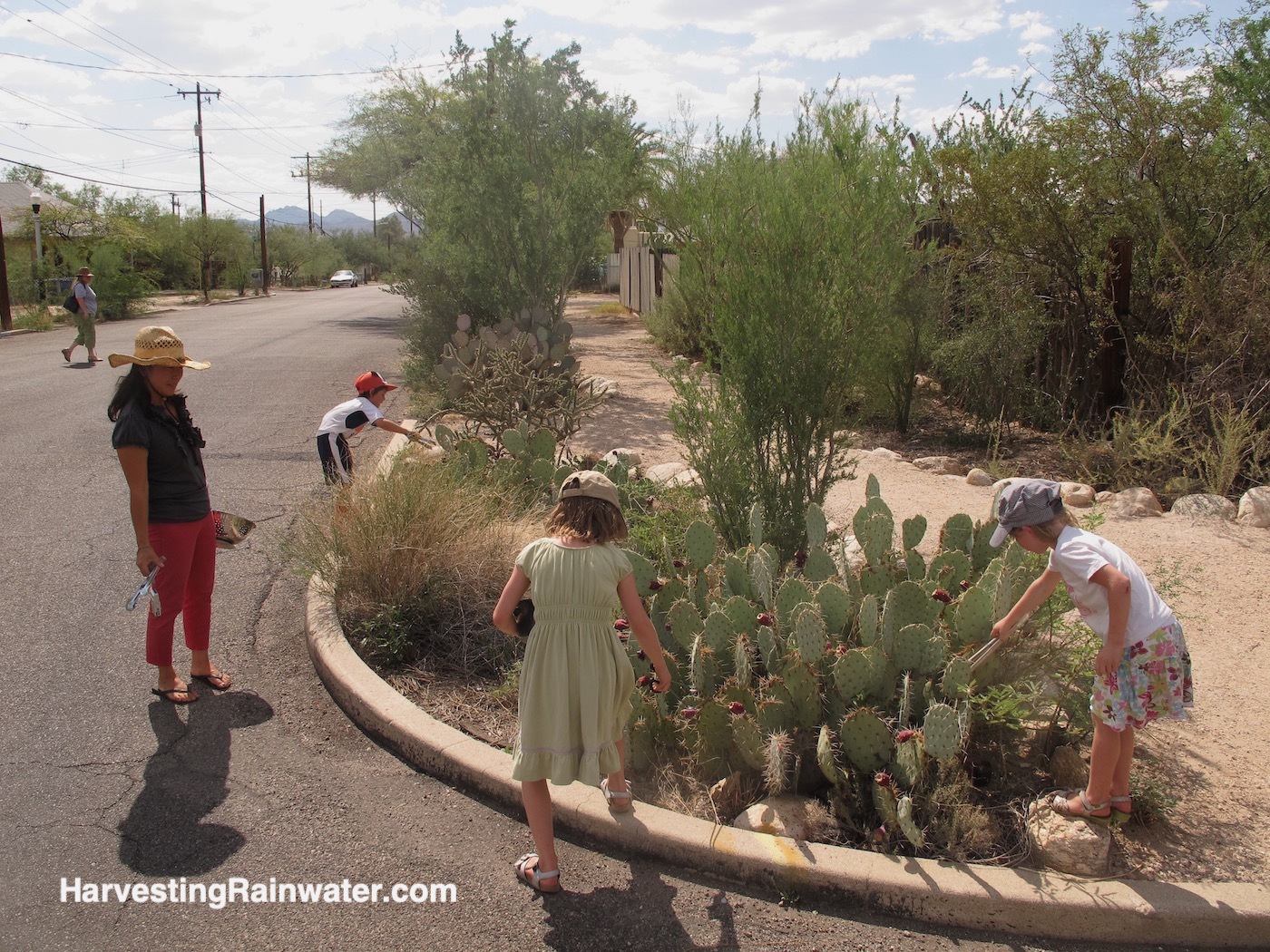
Photo: Brad Lancaster
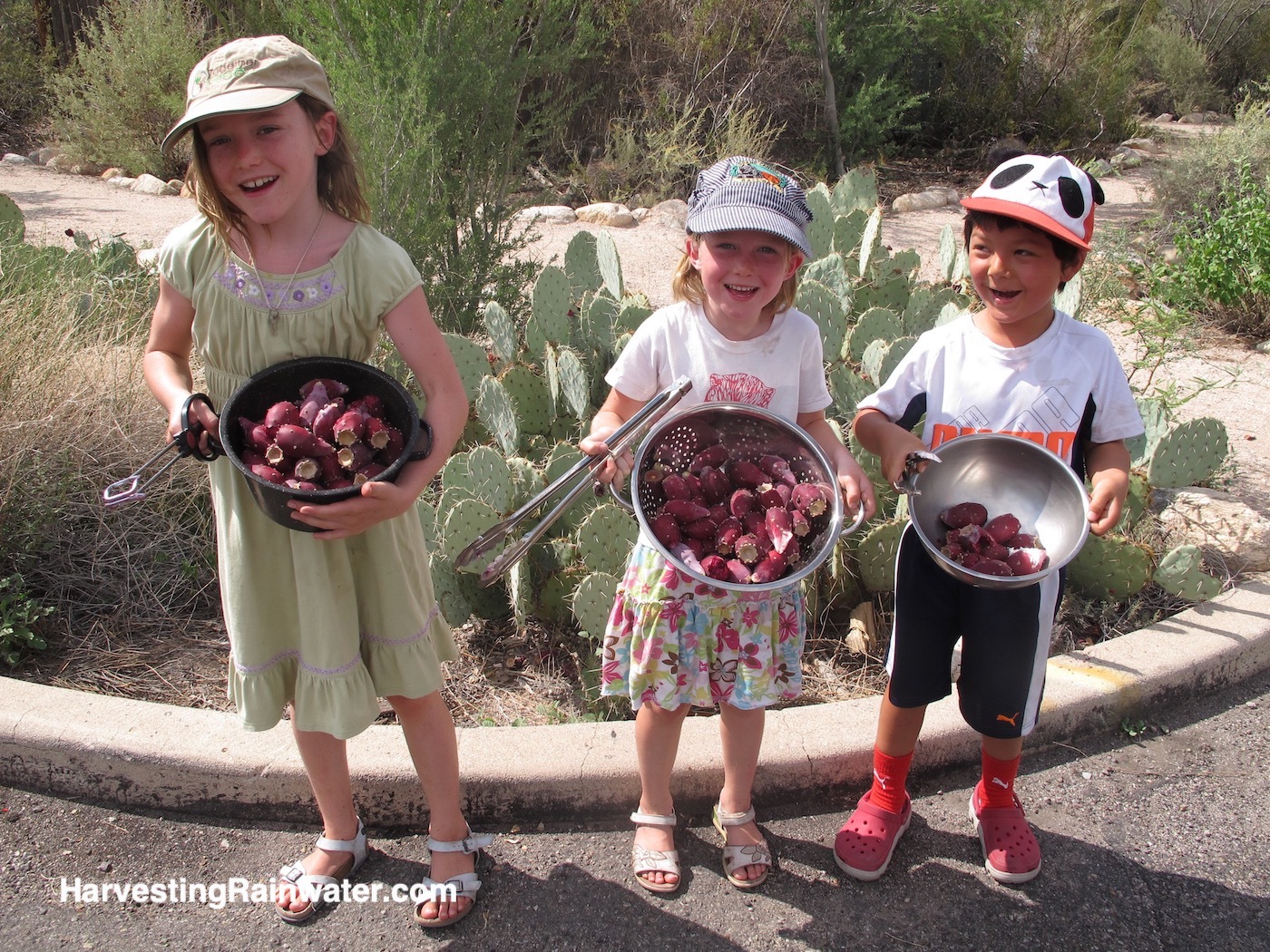
Photo: Brad Lancaster
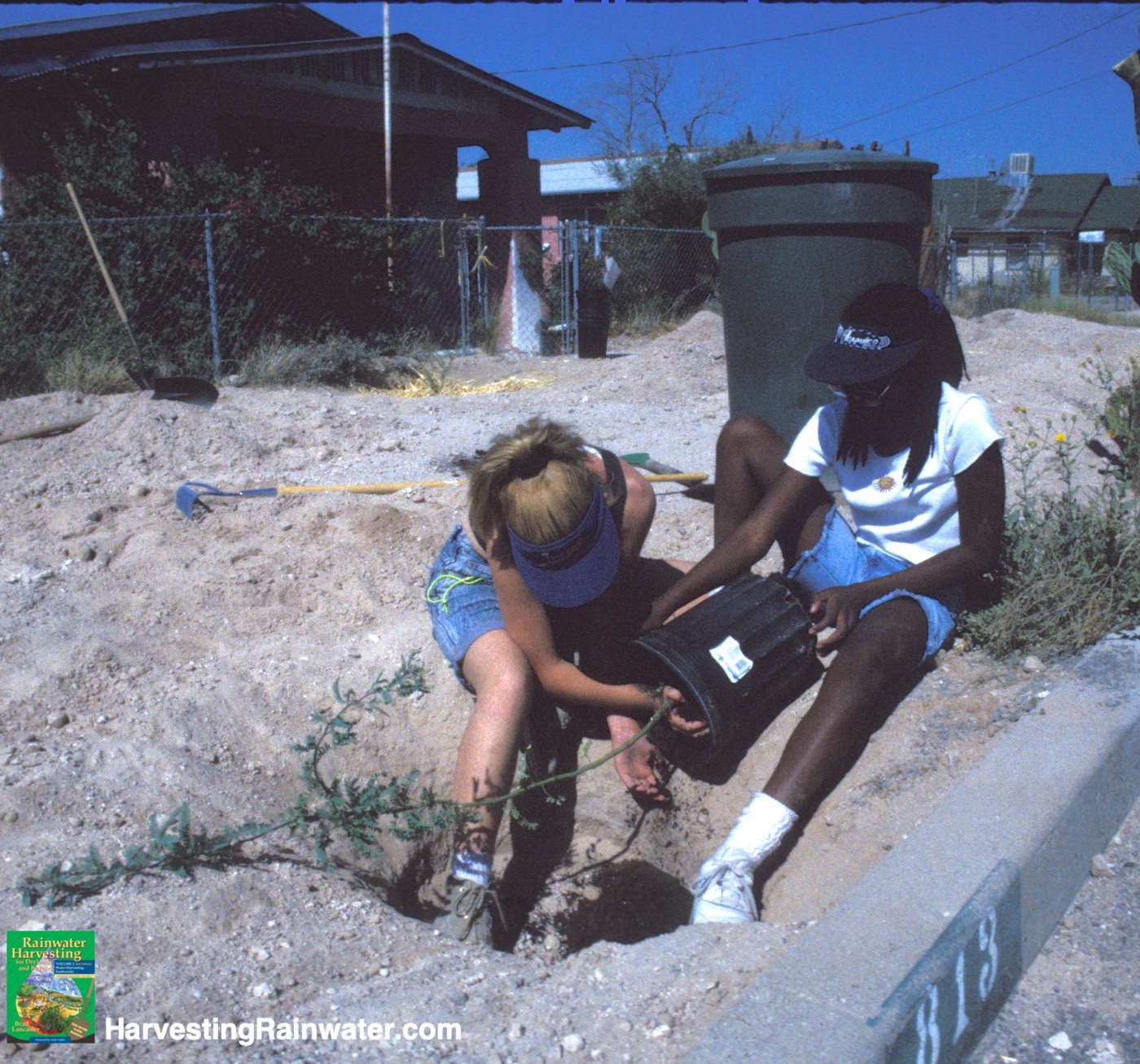
Photo: Brad Lancaster
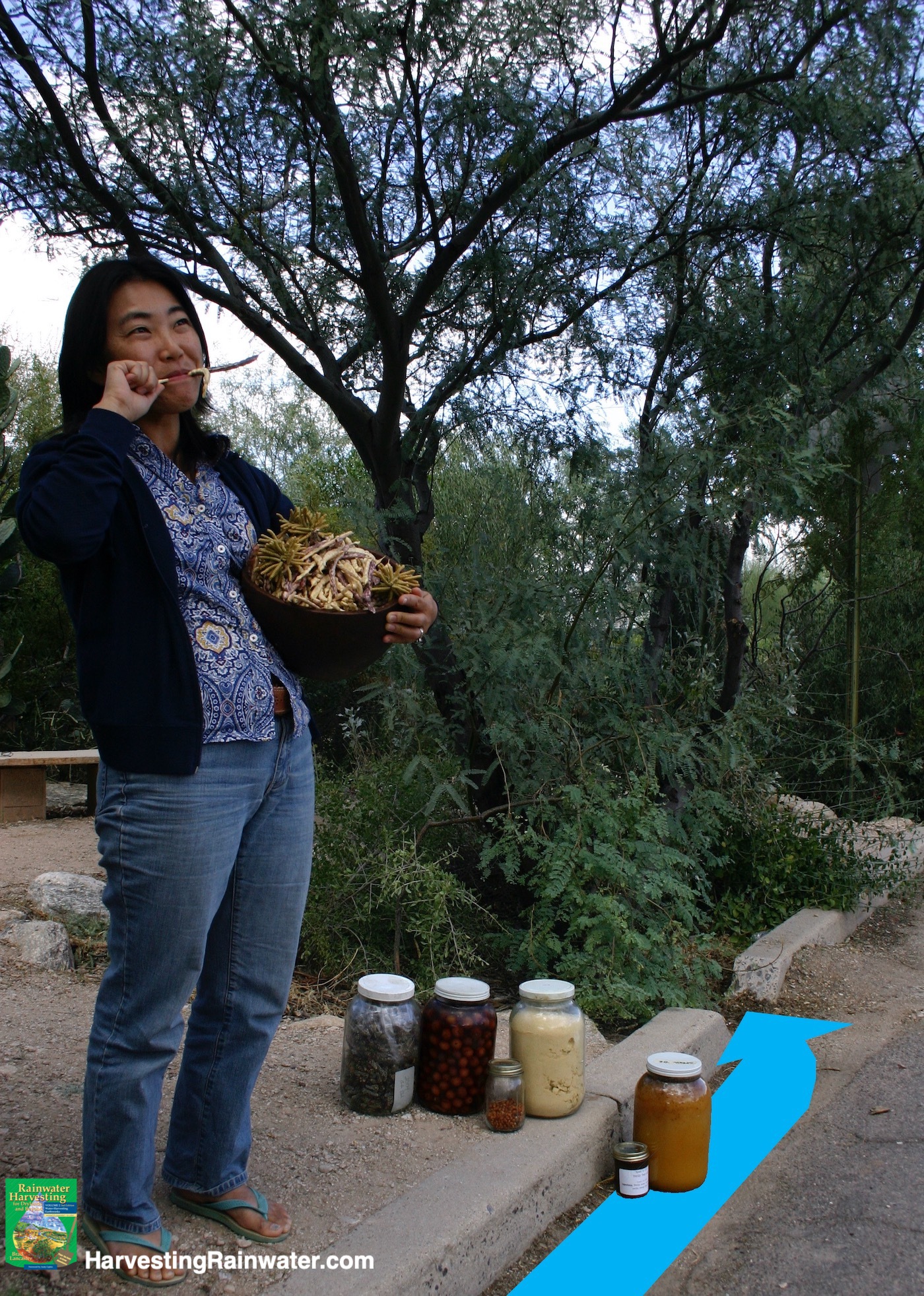
Seed pods harvested from the tree are tasty to chew on and can be ground into flour. Neighborhood cholla buds, olives, chiltepines, mesquite flour, prickly pear jam, and honey sit on ground near the curb cut that allows street runoff to passively irrigate food-bearing plants in the public right-of-way.
Blue arrow denotes water flow.
Photo: Brad Lancaster

Photo: Brad Lancaster
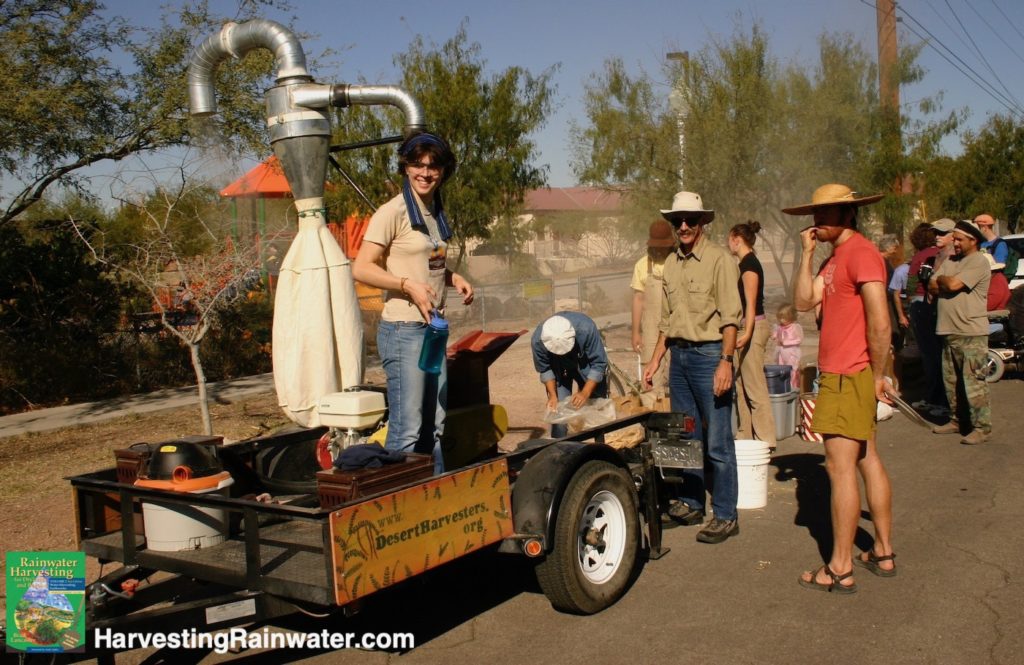
Photo: Brad Lancaster
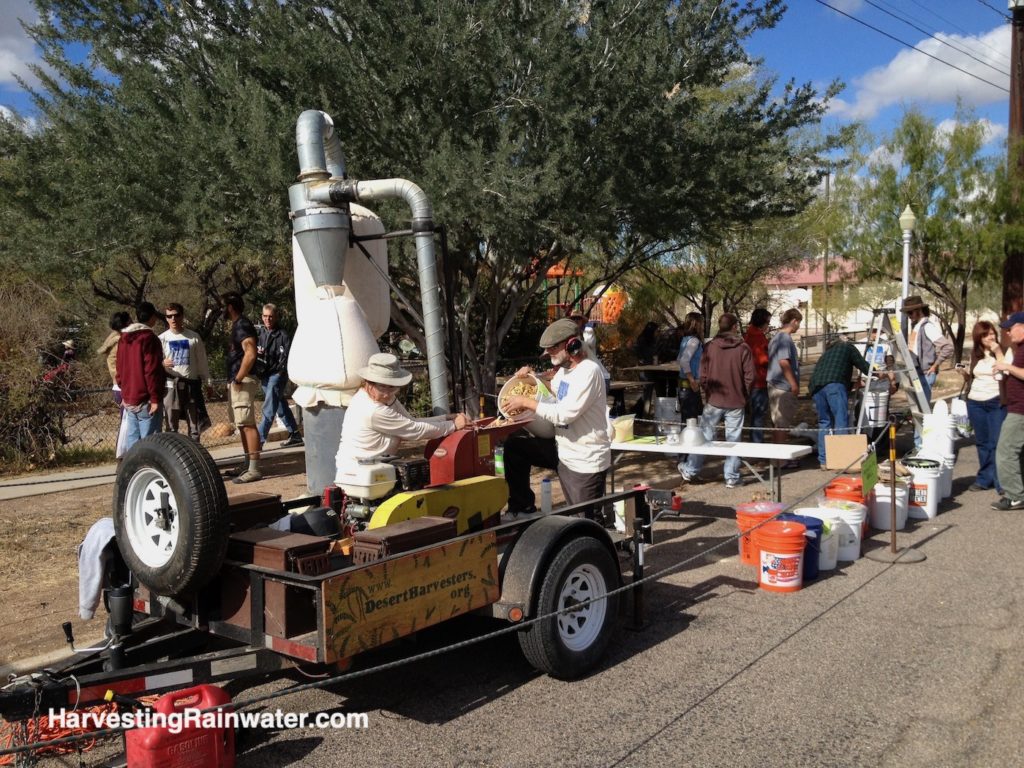
Photo: Brad Lancaster
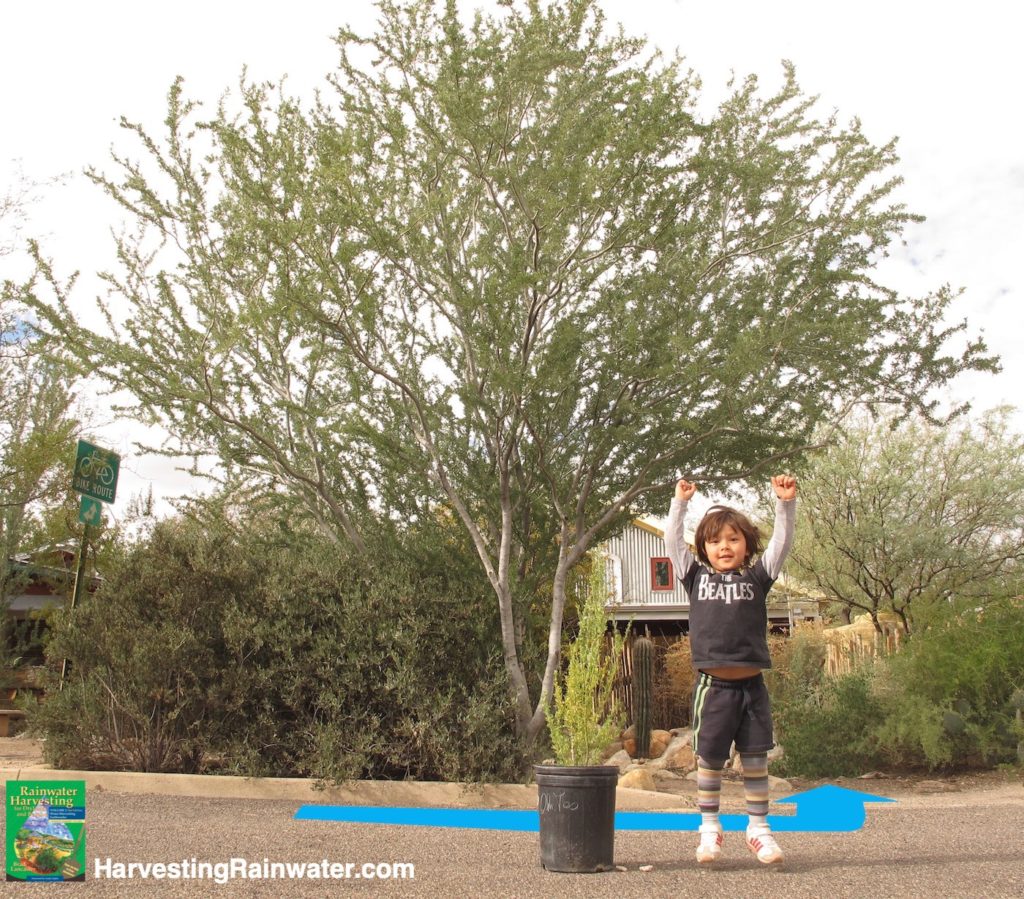
My nephew Vaughan tries to show how big the desert ironwood tree will grow, just before we plant it and the rain along the public right-of-way’s footpath.
Photo: Brad Lancaster
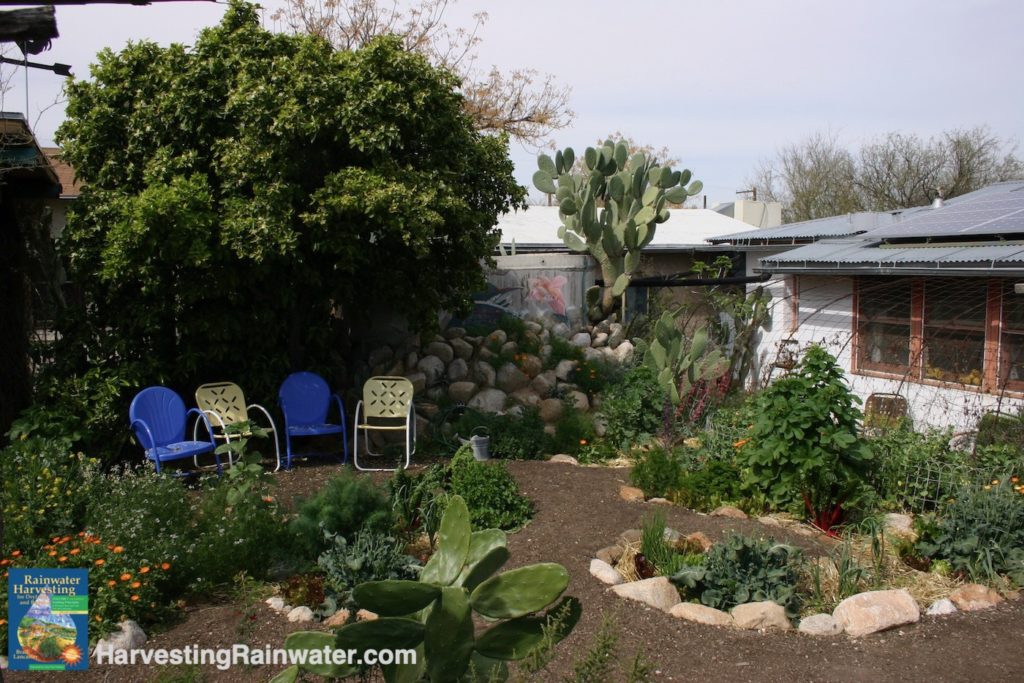
We’ve since added a second 1,300-gallon (4,900-liter) tank to double the capacity.
Photo: Brad Lancaster
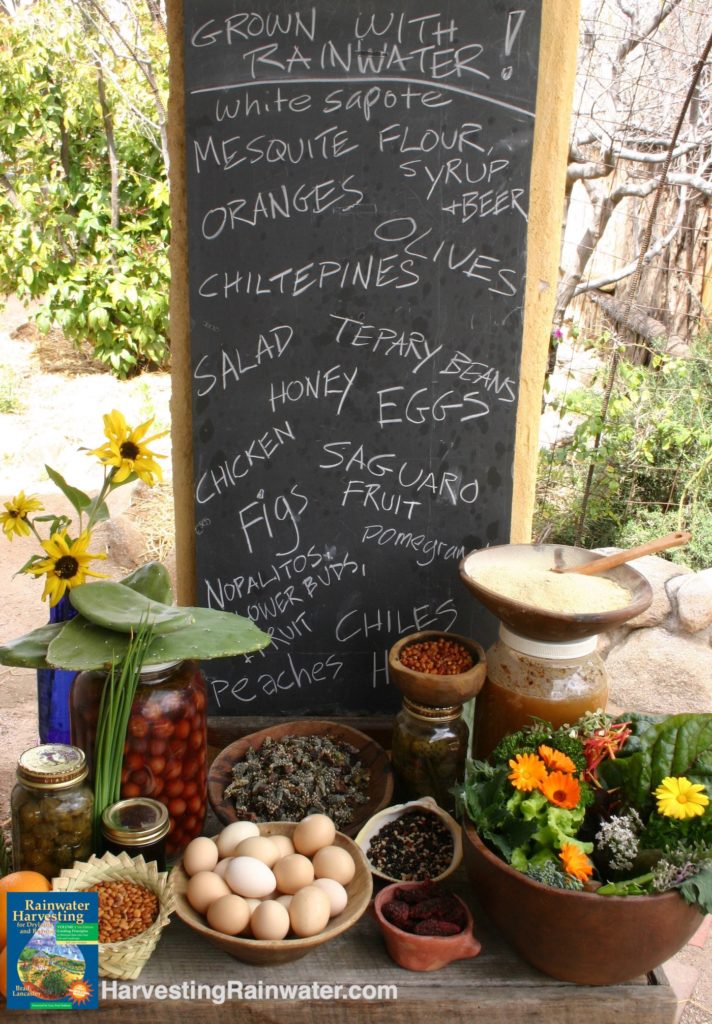
Photo: Brad Lancaster
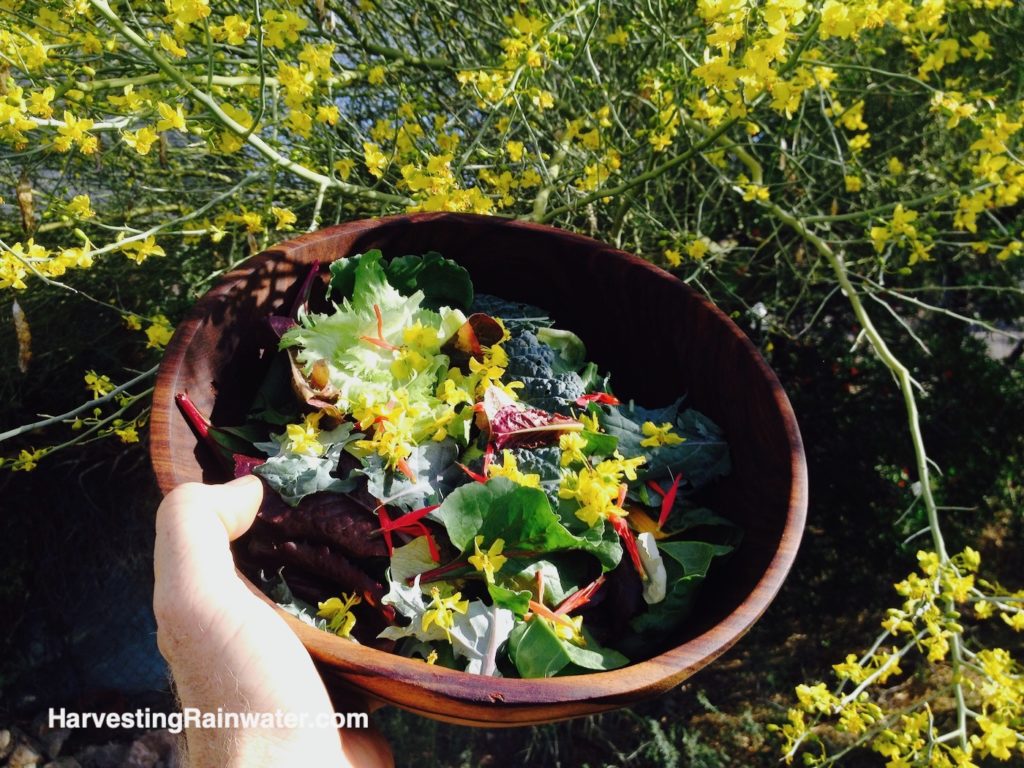
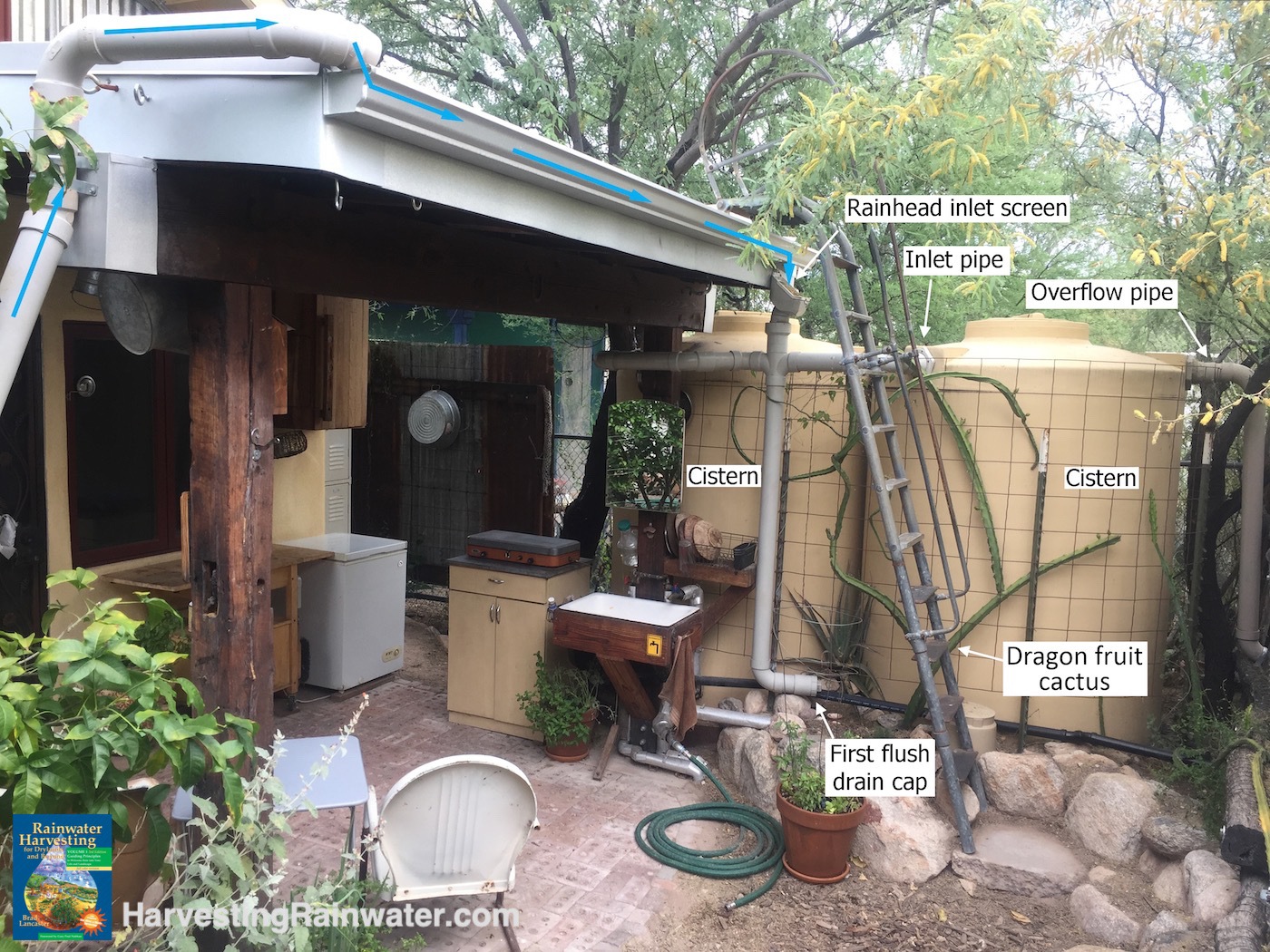
First-flush water (dirty/fertile roof runoff deflected before it reaches the tanks) is conveniently directed to tasty dragon fruiting cactus.
Tank overflow is directed to cascading basins starting at highest point of yard (not in photo).
Gravity-fed rainwater from tanks plumbed to sink faucet.
Greywater from sink directed to plantings in the landscape via black branched-drain pipe.
Photo: Brad Lancaster
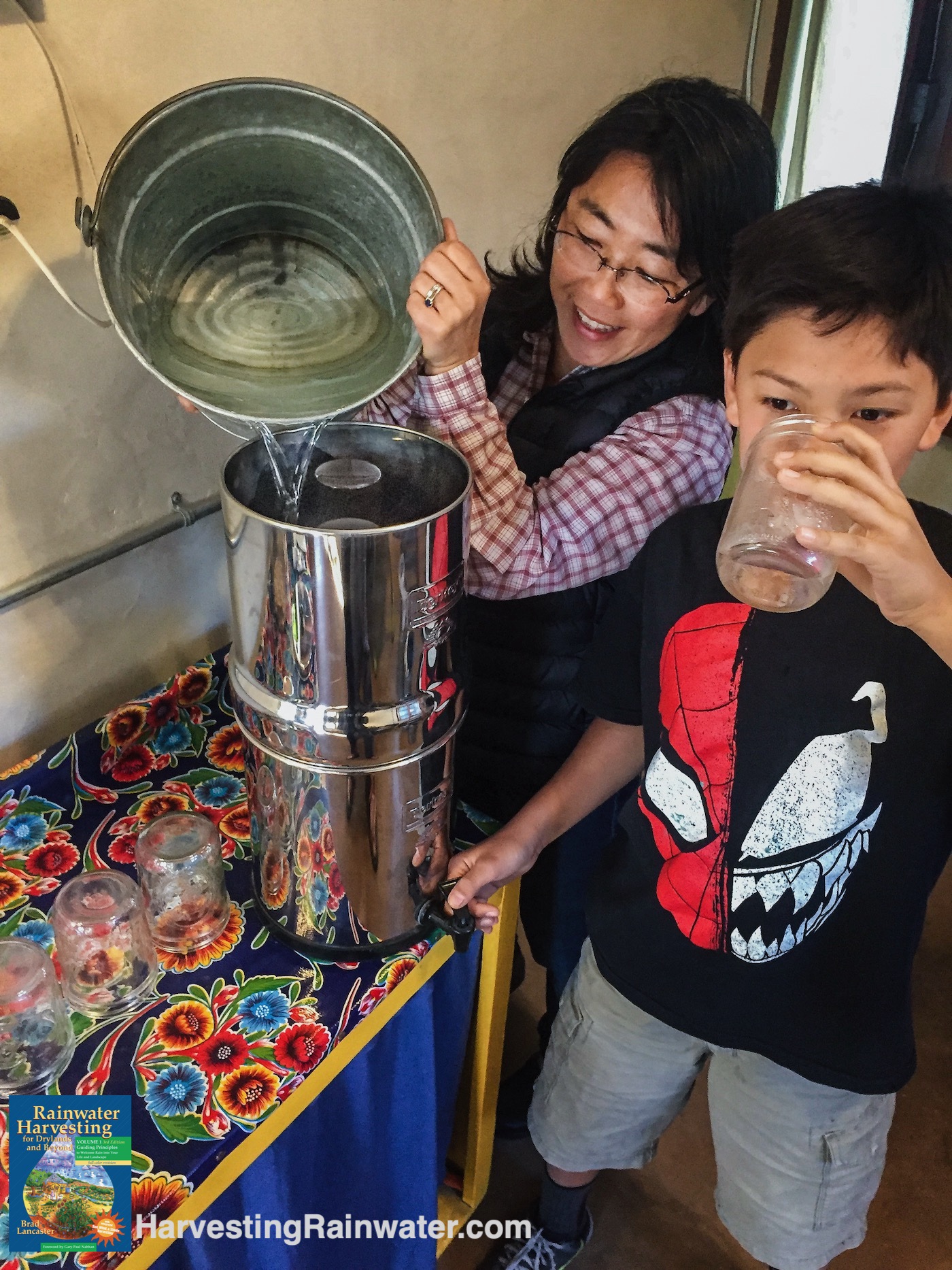
Water moves through the filter by the free force of gravity and collects in the container with tap below.
Photo: Brad Lancaster
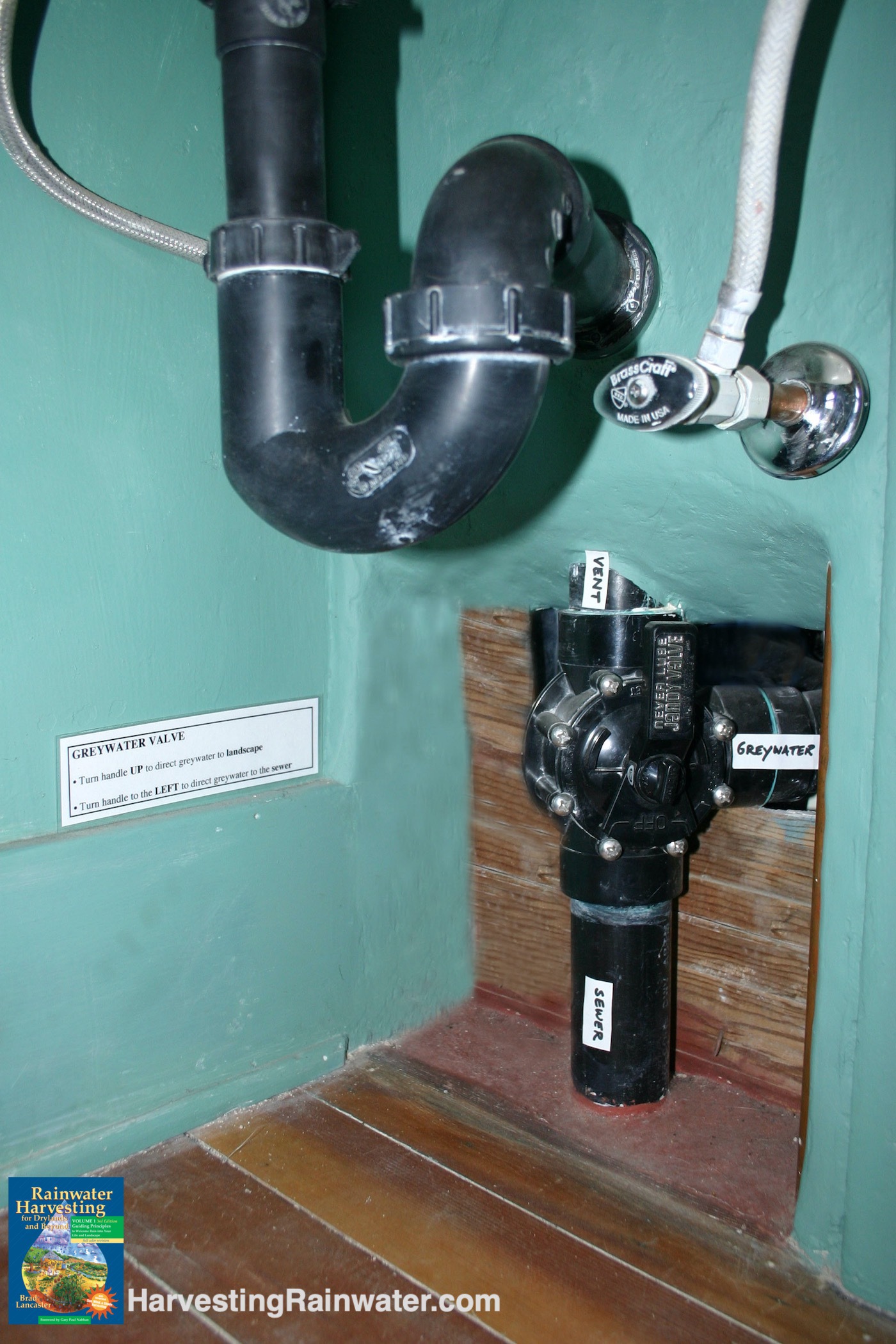
Photo: Brad Lancaster
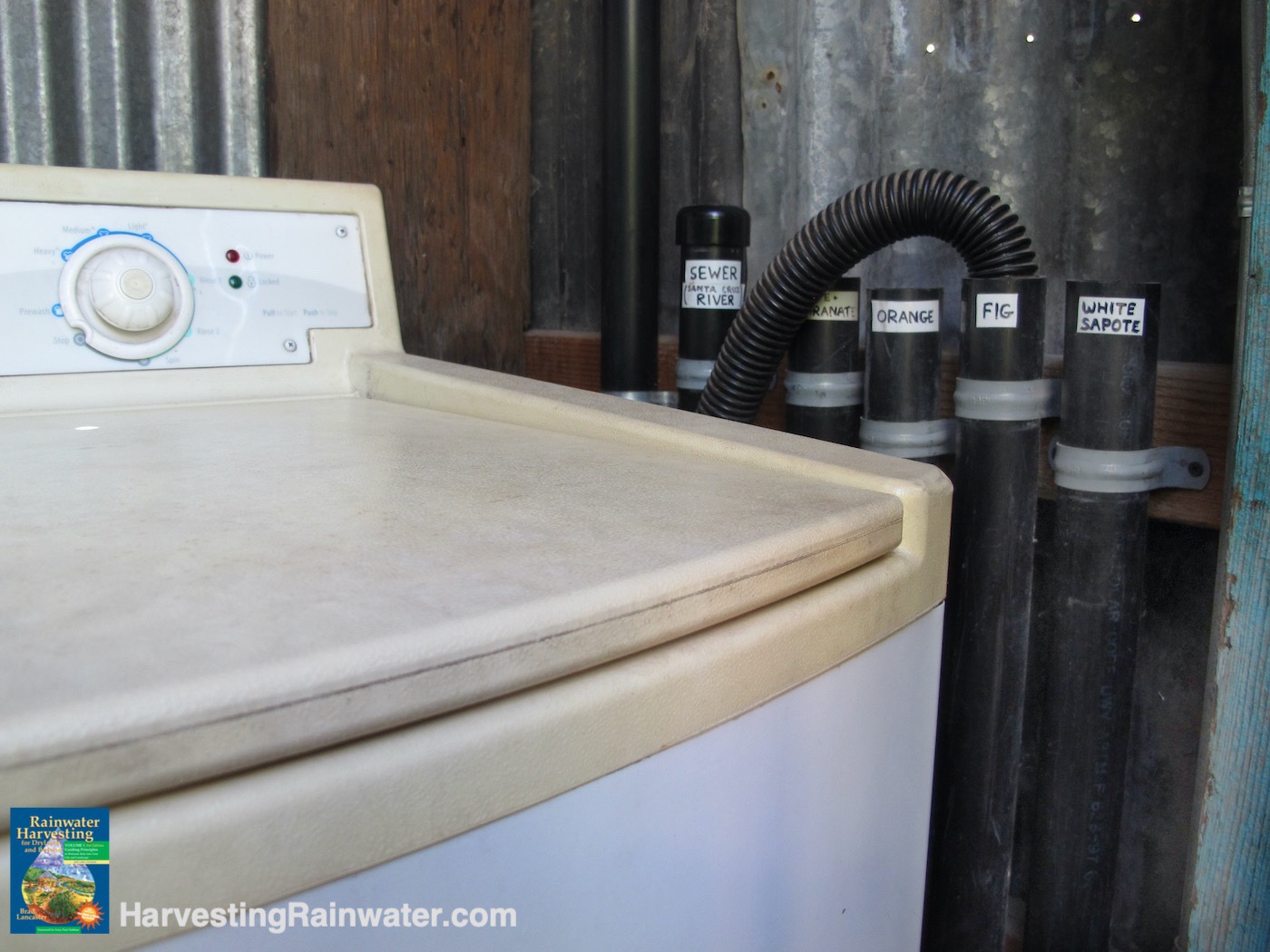
Drain hose from washer is placed in a different pipe with every load of laundry.
Note: include an additional marked drainpipe going to the sewer (capped when not in use) as an option for households that occasionally use non-biocompatible detergents or that have seasonally saturated or frozen soils.
Photo: Brad Lancaster
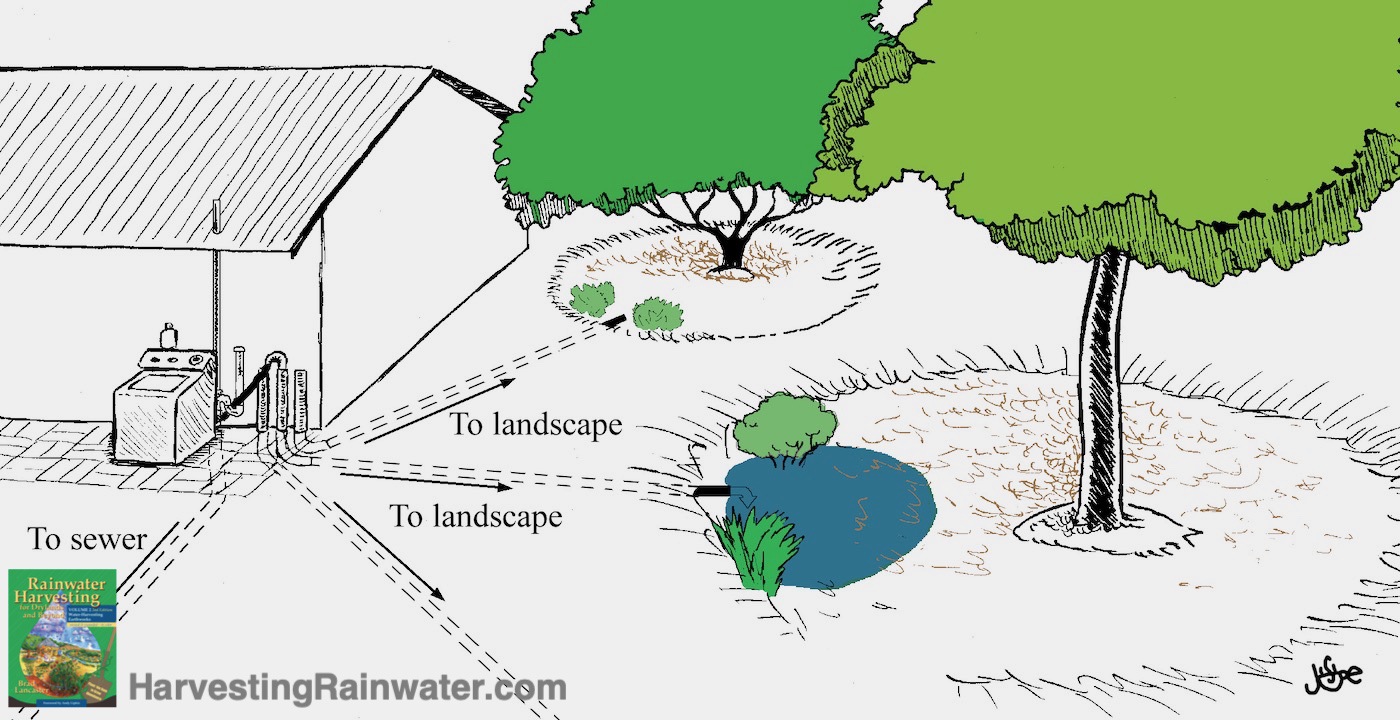
Pipes maintain a minimum 2% slope.
Note: outdoor installations do not require P-traps or vent stacks for greywater drains, but they are required for the sewer drains.
Illustration: Joe Marshall
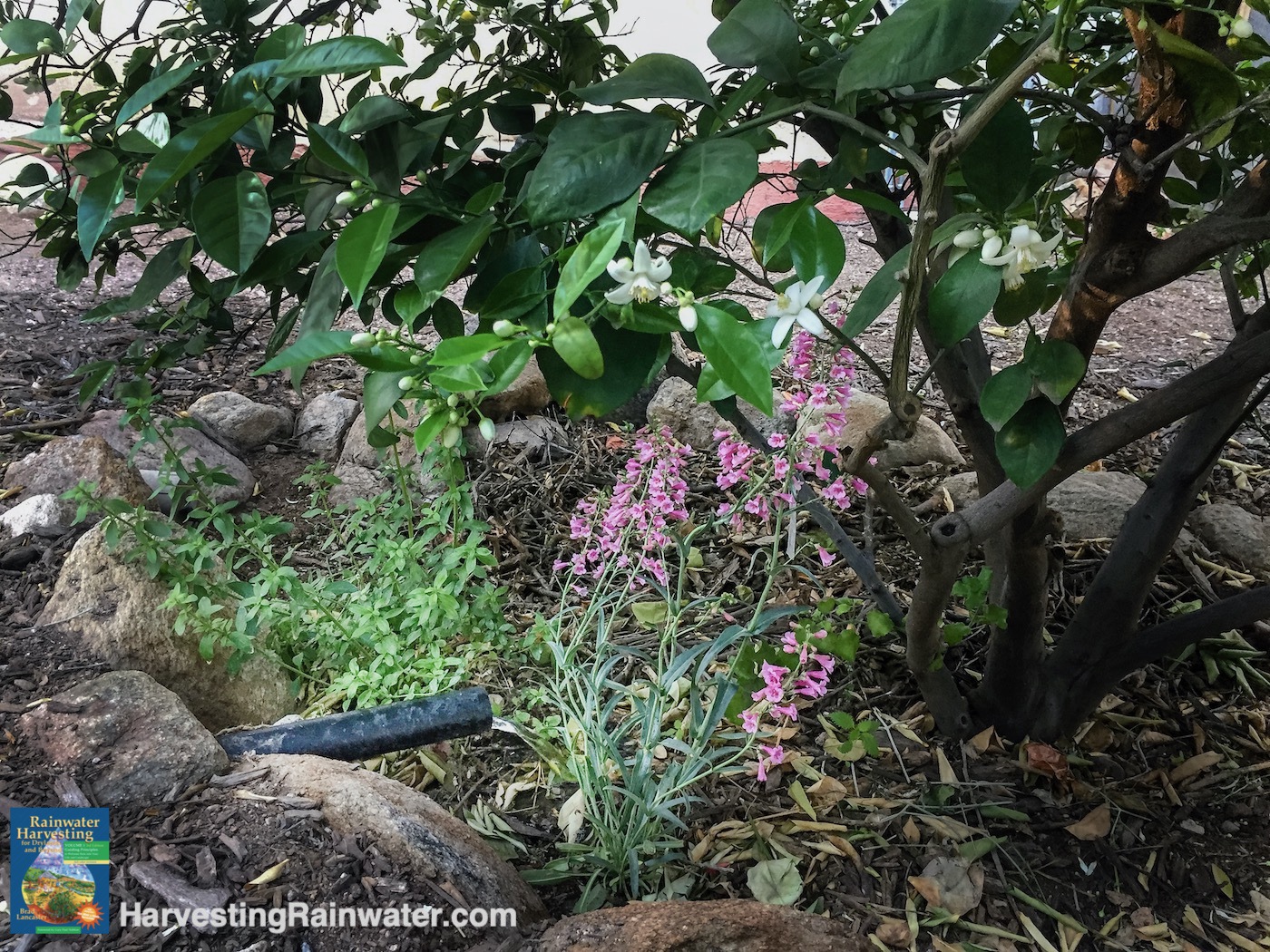
The pipe outlet discharges 3 inches (7.6 cm) above the surface of the mulch to keep roots from growing into and clogging the discharge pipe. Greywater immediately infiltrates through the mulch to the soil below. Greywater is dispersed to multiple basins to reduce flow to any single basin, enhancing infiltration further. Basins are sized to contain and infiltrate the peak surge of greywater that could potentially be discharged in a short time period.
Photo: Brad Lancaster
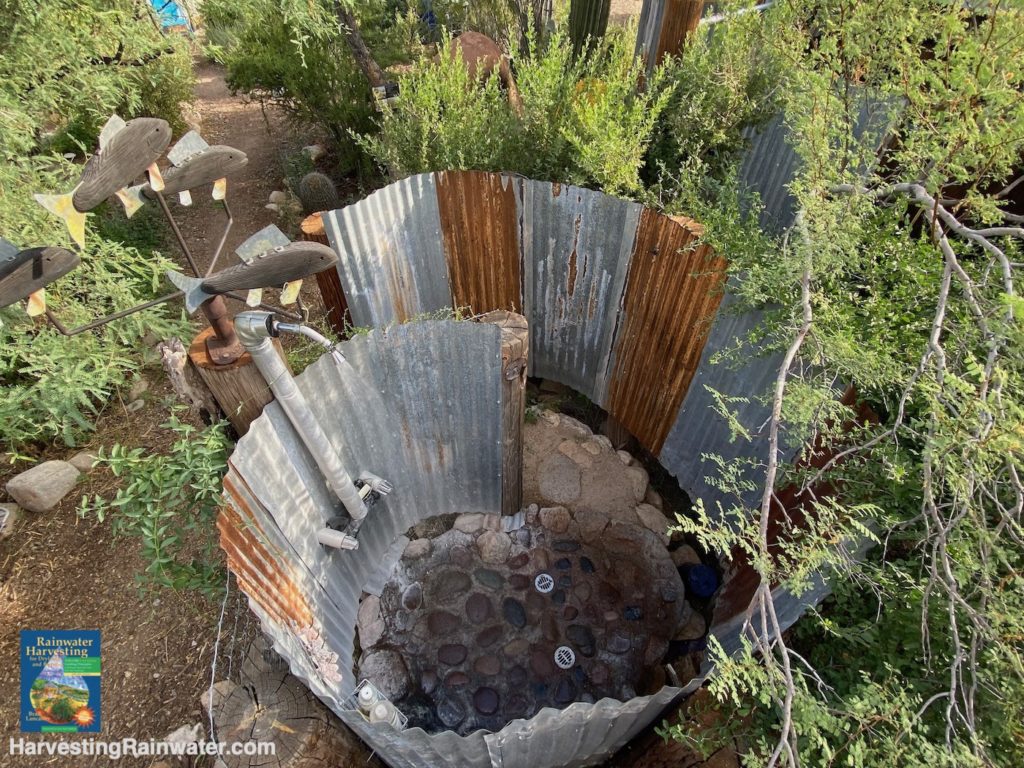
Before & After photos…
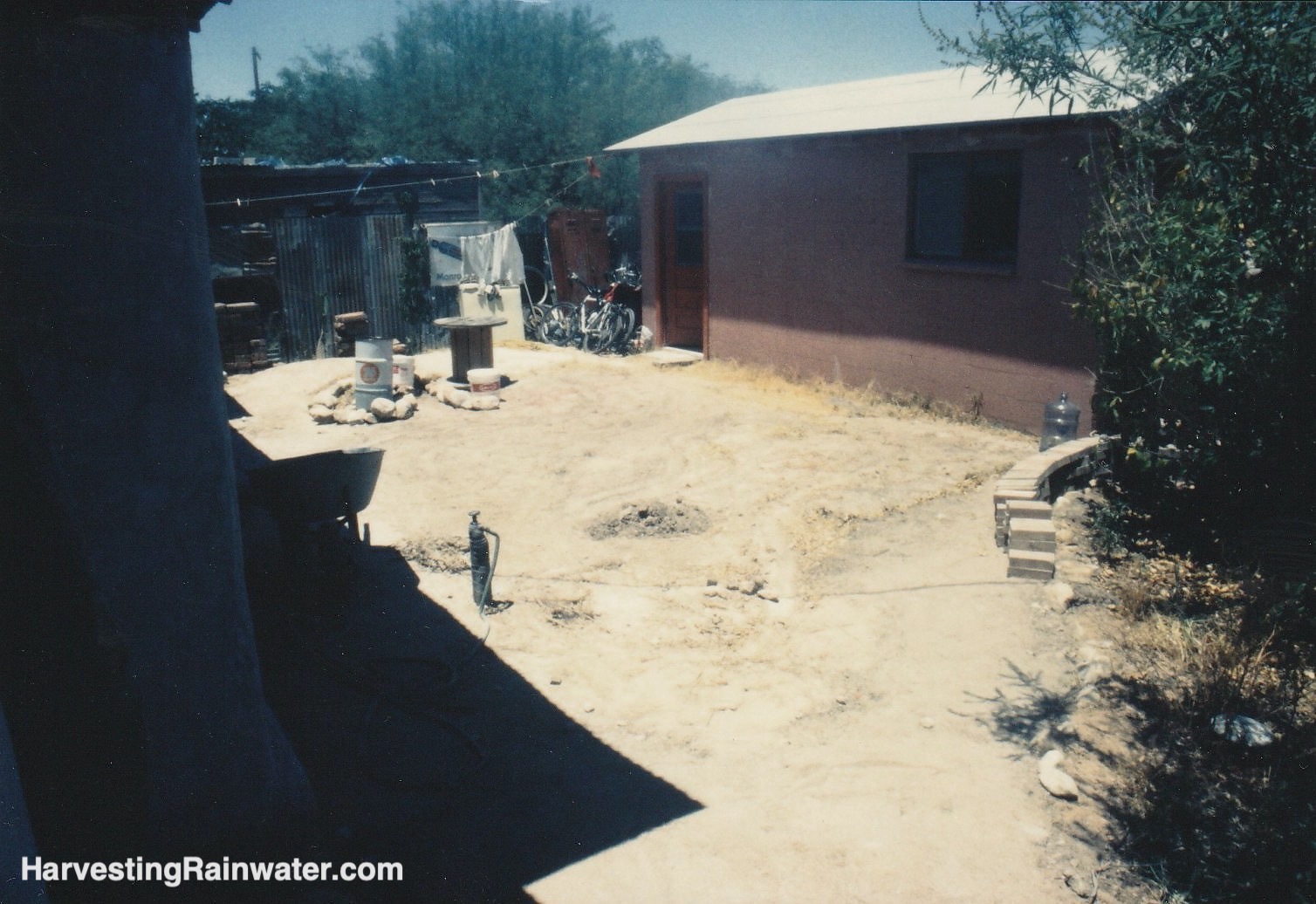
During storms stormwater water would flow into adjoining structures.
Photo: Brad Lancaster
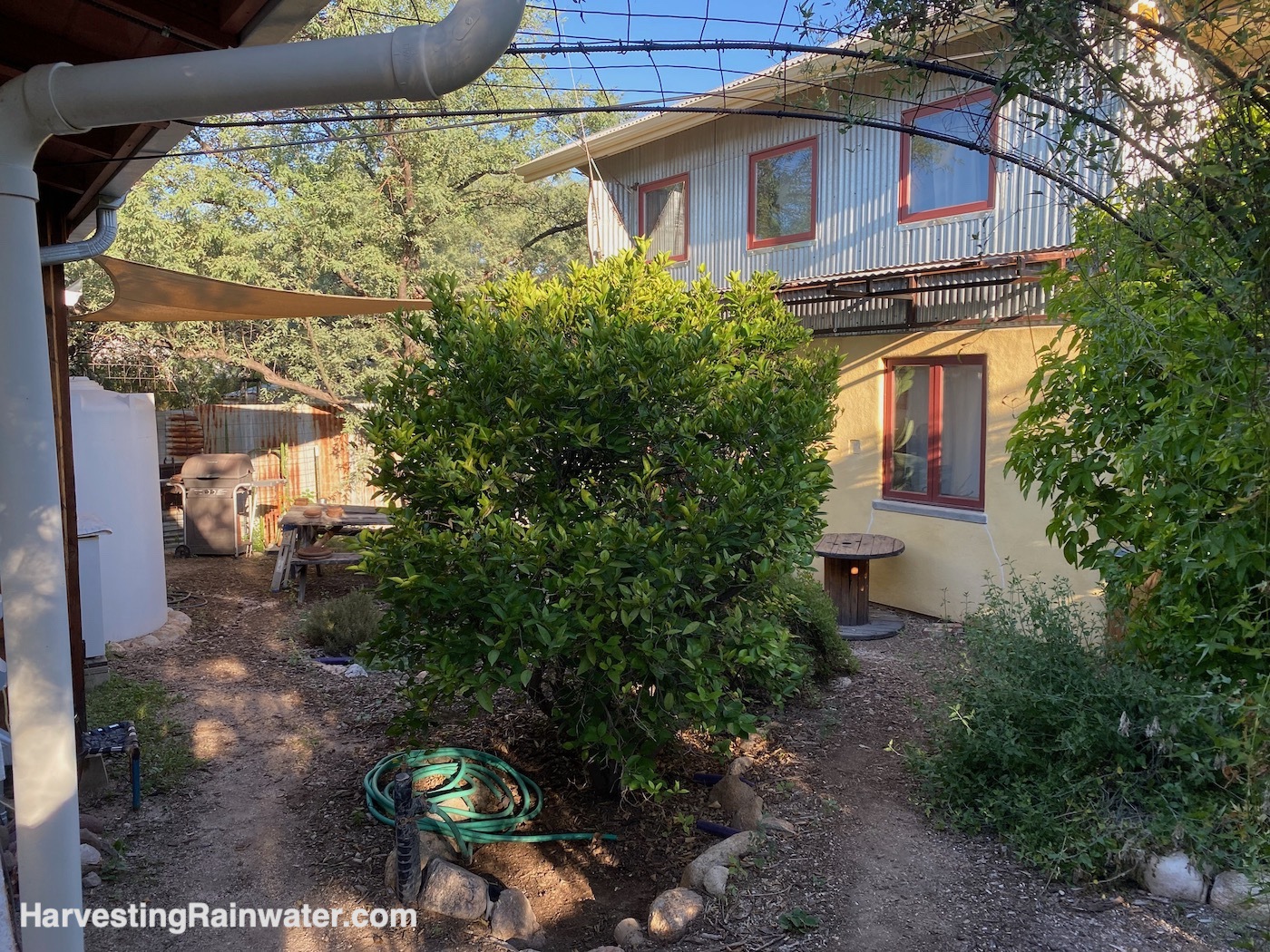
During storms water flow to, and is rapidly infiltrated within, mulched and vegetated basins. No more flooding.
Photo: Brad Lancaster
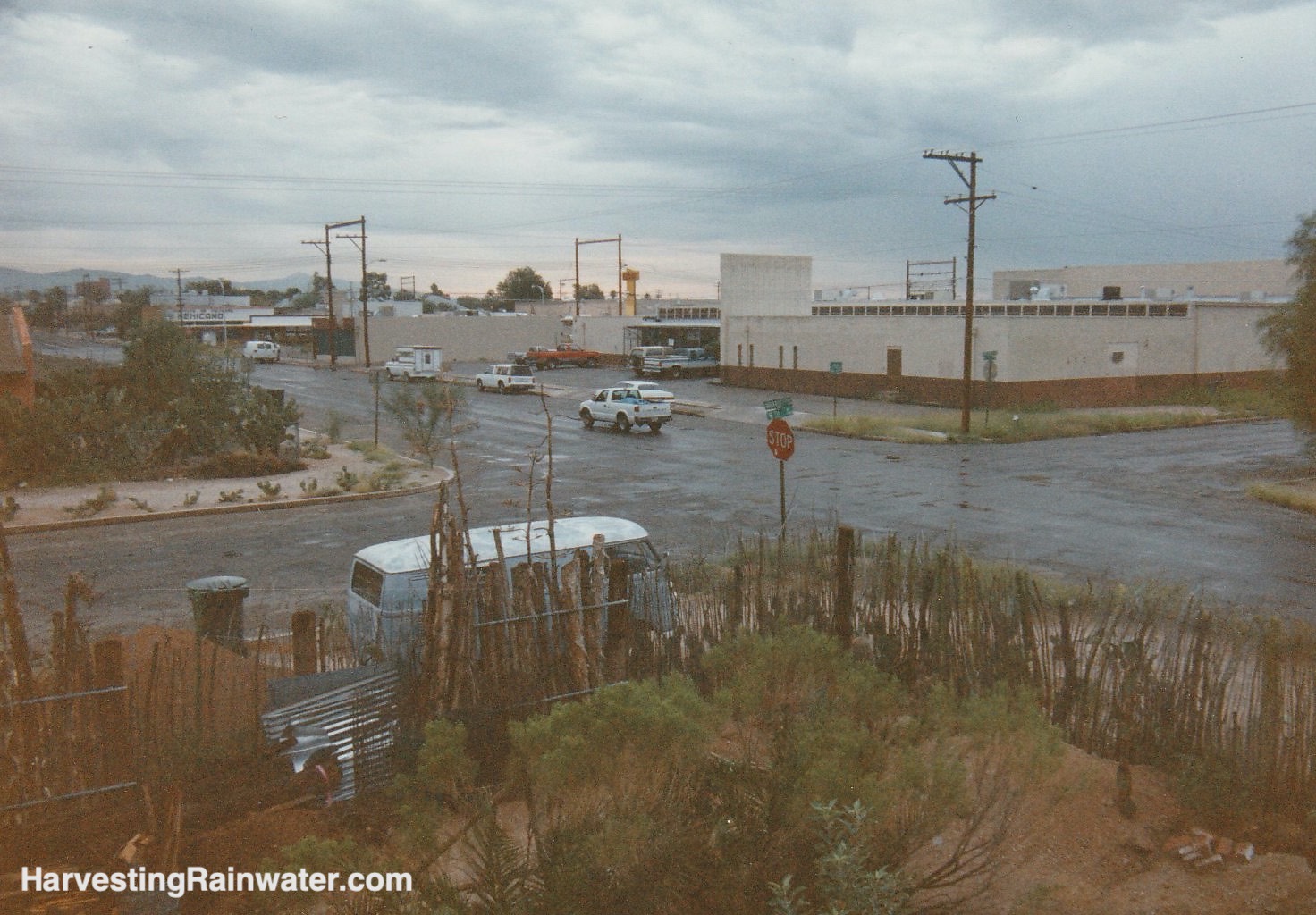
Photo: Brad Lancaster
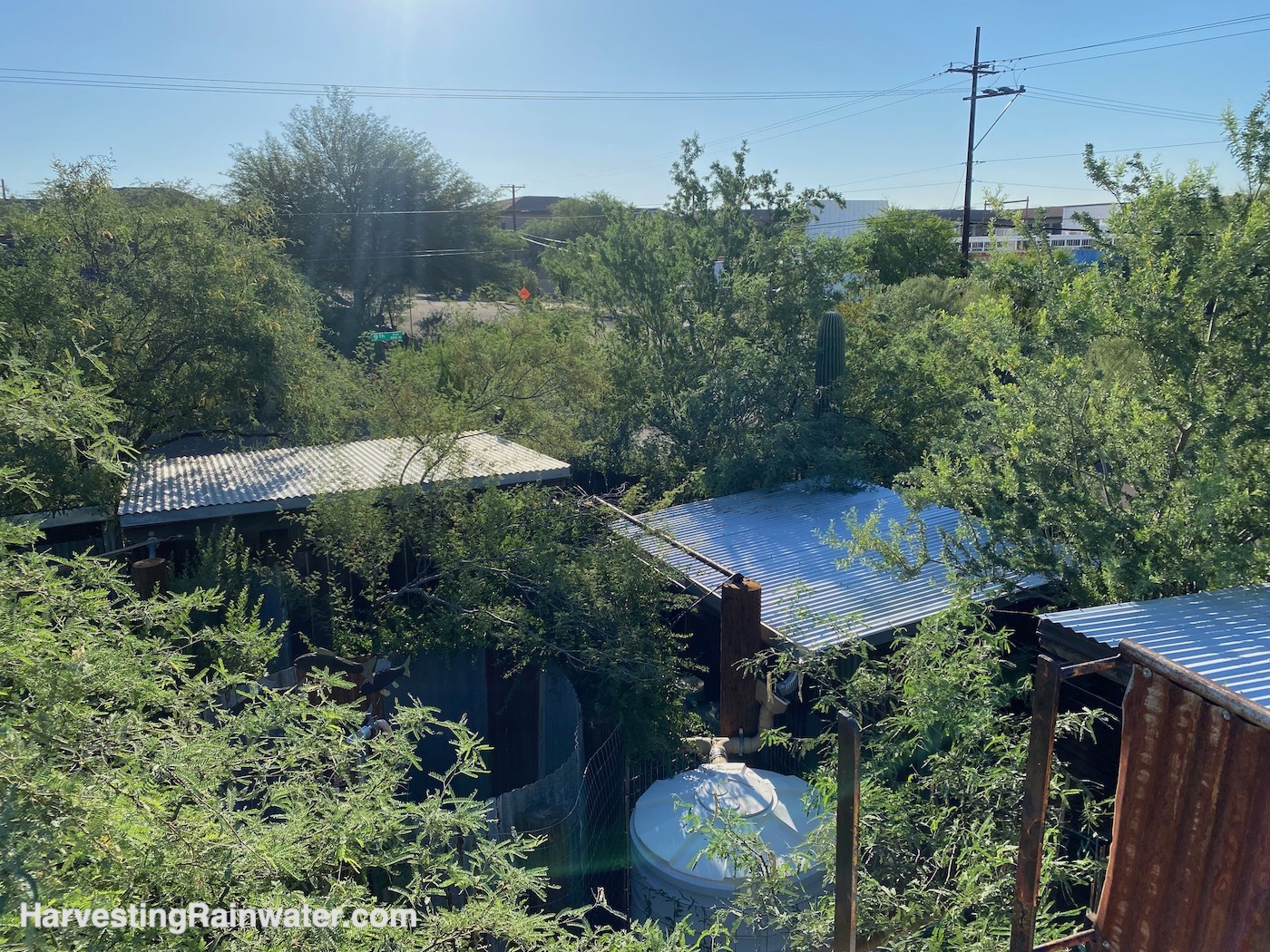
Vegetation is irrigated for free with passively harvested rainfall, street runoff, & outdoor shower greywater.
Photo: Brad Lancaster
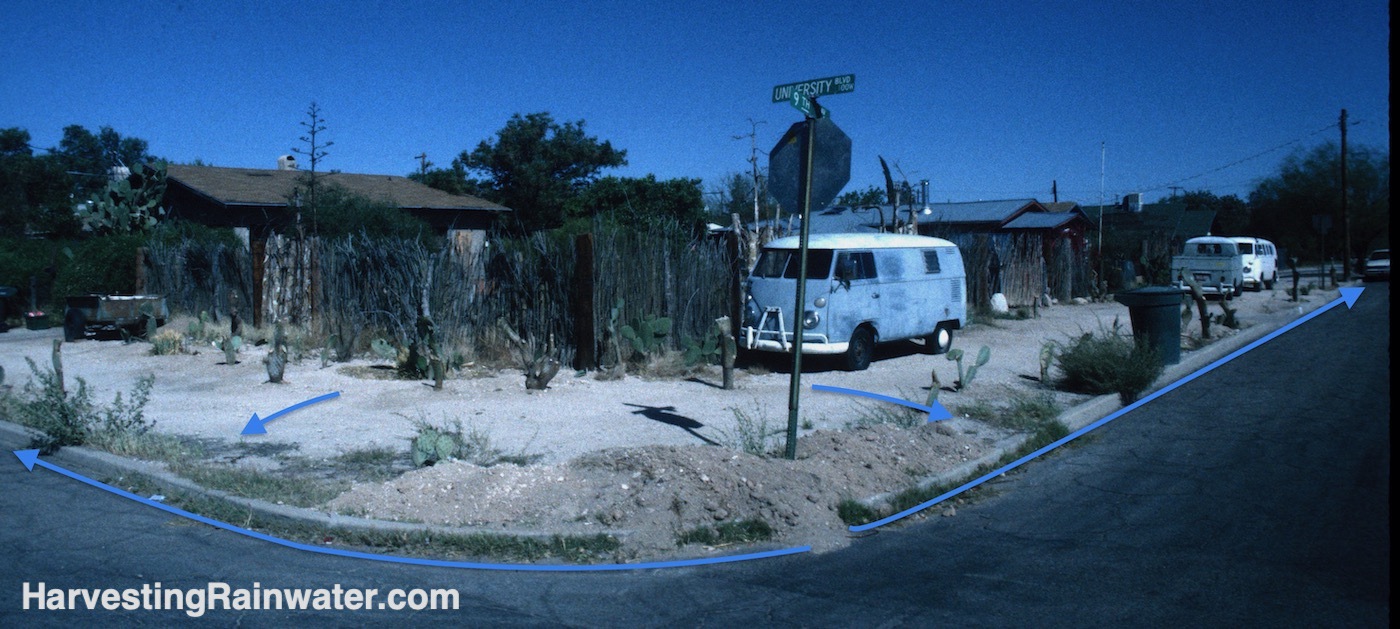
Before the harvest of free, on-site waters. Rainwater drains to the street.
Street runoff drains to the stormdrain.
Photo: Brad Lancaster
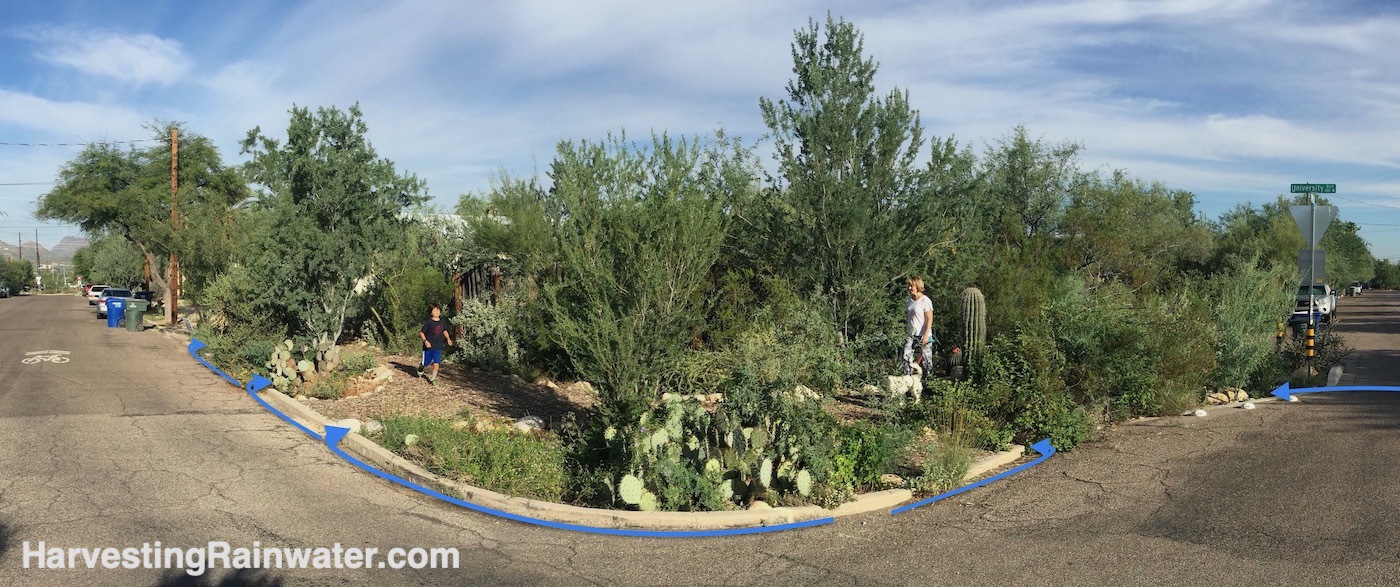
After the harvest of free, on-site waters. Rainwater is captured within sunken, mulched, and vegetated basins.
Street runoff is directed to street-side rain gardens.
Photo: Brad Lancaster
For more…
See the new, full-color, revised editions of Brad’s award-winning books
– available a deep discount, direct from Brad:

Volume 1
THE book to enable you to assess all your free on-site waters, then create an integrated water harvesting plan.
Has the story of the transformation of the Lancaster residence and how you can do likewise

Volume 2
Lots of step-by-step instructions on how to design, build, and plant many different kinds of rain gardens for many different contexts.
Showcases the strategies that transformed our neighborhood streets with water-harvesting traffic-calming, street-side native food forest plantings, and more.
Also includes a chapter dedicated to household greywater harvesting strategies.
